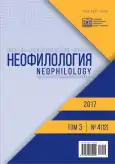The active process of interaction between common nouns and proper names in which appear that proper names are the results of national language and one of its components is considered. Onomastic units, forming the system of knowledge about the world are the results of comprehending by the human of real world events and their interpretation by linguistic consciousness. The stylistically marked proper names like Собака , Воробей , Муха , Картошка , Паук , Камбала , Корова are the evidence of intensification of common nouns собака , воробей , муха , картошка , паук , камбала , корова (dog, sparrow, fly, potato, spider, flounder, cow) well known from the very childhood. The differences of cognitive group of words between thematic group and lexical-semantic group in three aspects are considered. It is proved that cognitive groups of words choose from the thematic group and lexical-semantic the most commonly used lexis; in cognitive groups of words the words of different lexical-semantic groups within the framework of one thematic group correlating with cognitive group in sense may be presented not fully, in cognitive groups of words the lexis relevantly correlating with the realia of the world around is presented.
 5-9
5-9


 10-17
10-17


 18-23
18-23


 24-29
24-29


 30-34
30-34


 35-41
35-41


 42-49
42-49


 50-57
50-57


 58-66
58-66


 67-72
67-72


 73-80
73-80











